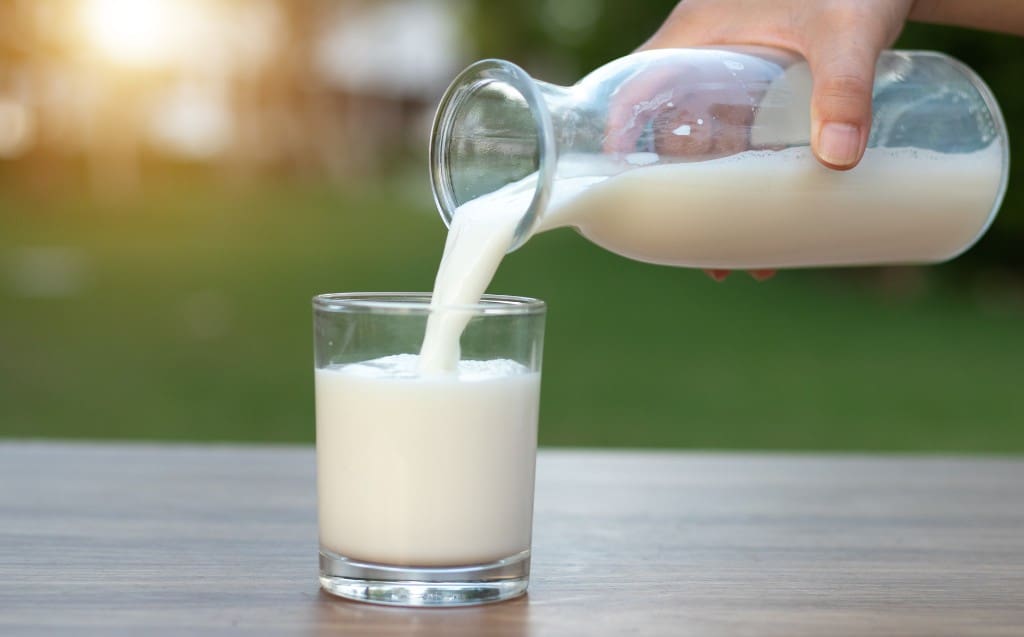
A low concentration of algae is even a part of a healthy garden pond. However, it can quickly increase due to various factors. When many nutrients are present in the pond, combined with hot weather, algae can proliferate rapidly and seriously affect water quality. In the worst cases, the water can turn toxic, resulting in harm to your fish. Algae need to be dealt with. Various internet sources recommend home remedies for controlling algae, including the use of milk. In this article, you’ll find out whether milk is a good or bad option and what works best for algae control.
Causes of Algae Formation
Before you tackle your algae problem, you should understand the causes of algae formation. One significant factor leading to algae growth is a high nutrient concentration in the pond, which can result from:
- Dead plant material
- Debris such as flower pollen, small branches, leaves, or insects falling into the pond
- Heavy rain or prolonged rainy periods, which make the water acidic and reduce mineral concentration
- Uneaten fish food
- Fish waste.
Warmth promotes algae growth, especially on hot summer days.
Killing Algae with Lactic Acid
When you search online for home remedies to combat algae, you may come across recommendations to use milk to eliminate algae. The reason behind this suggestion is the lactic acid in milk, which can kill algae. Lactic acid bacteria can counteract algae formation and fight existing algae. Milk is considered a natural remedy and appears to be well-tolerated. However, you would need to add a substantial amount of cow’s milk to the pond since cow’s milk has a low concentration of lactic acid. Alternatively, you can let the milk sour, which increases the lactic acid bacteria concentration. This is also true for whey. However, there is a catch: milk, sour milk, or whey are not recommended for algae control.
Why Milk is Not Suitable for Algae Control
Milk may temporarily combat algae if you add it to the pond in the right concentration, but it makes the water cloudy. The same happens when you use sour milk. Cow’s milk is not only low in lactic acid but is also harmful because it contains fats and lactose. This increases nutrient levels in your pond, which can further stimulate algae growth. Milk negatively affects water quality and disrupts the delicate ecosystem in your pond. Thus, using milk in your garden pond is not advised. The pH level of your pond can also decrease due to milk, shifting the water from alkaline to neutral or acidic, which can be detrimental to fish and plants.
Preventing Algae Formation
To counteract algae formation, you should:
- Regularly monitor water parameters and take appropriate measures in case of deterioration
- Remove dead plant material
- In summer, daily use a pond net to remove debris such as flower pollen, insects, and leaves
- Introduce a variety of aquatic plants
- Use a circulation pump and the right pond filter
- Provide shade for your pond in the summer months.
Biological pond filters work with filter bacteria and are well-suited for garden ponds. Choose a pump and filter that match your pond’s size. Conduct pond cleaning at least twice a year. Use a sludge vacuum to remove the pond’s mud. The sludge vacuum can also be equipped with various brushes to remove algae and other impurities from the pond walls and bottom.
Mechanical Removal of Algae
For the best removal of filamentous algae, use an algae brush. If filamentous algae have already proliferated in your pond during the summer months, you can also turn a stick in the water to entangle the algae like spaghetti. A pond net can also be used for algae removal, but it may not completely eliminate the algae, especially if they have multiplied significantly during the summer. Take the challenge and use our algae removers.
Algae Removers with Active Oxygen
To effectively combat algae, use our algae remover with active oxygen. The contained bacteria dissolve dead algae. The active oxygen transports pond sludge to the water’s surface, allowing you to easily skim it along with the dead algae using a pond net. Active oxygen also kills living algae. When applied in the correct dosage, even stubborn algae are eliminated within 24 hours. Active oxygen has another advantage: it increases the oxygen level in your pond, countering the formation of new algae.
Destroying Algae’s Calcium Skeleton with Anti-Algae
You can obtain another algae remover with a anti-algae product. A substance is delivered to the algae via a carrier substance. The algae’s food intake is blocked without removing nutrients from the water. Additionally, the substance destroys the calcium skeleton of the algae, inevitably leading to their death.
Conclusion:
Algae can significantly impact water quality and potentially lead to water toxicity. While milk is sometimes recommended as a home remedy for algae control, it’s not suitable for this purpose. Cow’s milk contains low lactic acid, and it also has fats and lactose, which can exacerbate nutrient levels and encourage algae growth. Instead of milk, mechanically remove large amounts of algae using an algae brush and net. Additionally, use our algae remover products.